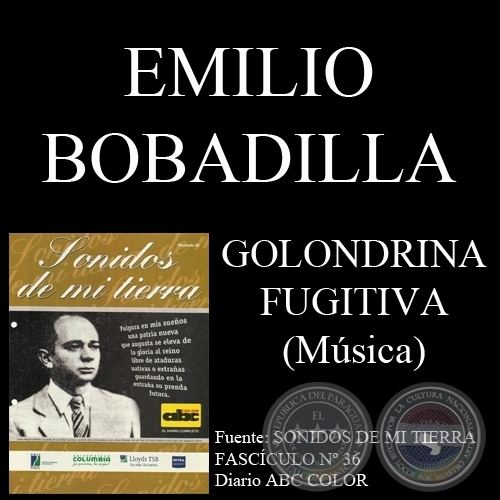Nationality Paraguayan | Name Emilio Caceres | |
 | ||
Full Name Emilio Bobadilla Caceres Died March 21, 1979Asuncion, Paraguay Notable work "Nane aramboha" y "Koeti jave" | ||
Alondra feliz grupo generaci n
Emilio Bobadilla Cáceres was a Paraguayan songwriter. He was born in Cerro Verá, in the town of Pirayú, Paraguay, on March 3, 1907. He was son of Ramón Bobadilla and Isabel Cáceres.
Contents
- Alondra feliz grupo generaci n
- Chipera Luque Emilio Bobadilla Caceres
- Childhood and Youth
- Beginnings
- Career
- Last years
- Work
- References
Chipera Luque - Emilio Bobadilla Caceres
Childhood and Youth

Still being a child he moved to Asunción, where he learned to play the “tiple” (a small guitar that served to the musical embellishment of the guitar plucking) and later the guitar. Since 1930 he lived in Buenos Aires, where he formed, along with Agustín Barboza, the duet Barboza-Cáceres.
Beginnings
In 1934 he participated in the recording of the first disc of the Ortiz Guerrero’s Orchestra, directed by the master José Asunción Flores, with the song “Ñane arambohá”, composed with lyric of Félix Fernández.
Career
In 1939, with his brother Cristóbal Cáceres, he started a series of recordings using the name “Dúo de los Hermanos Cáceres” (The Brothers Cáceres Duet), until 1950, with the orchestra “Ñande roga” of Mauricio Cardozo Ocampo.
He was founder and first president of “Intérpretes de Folklore Asociados del Paraguay – IFAP” (Associated Folklore Performers of Paraguay) and also was Vice President of APA in the ‘70s.
Last years
He died in Asunción, on March 21, 1979.
Work
He composed many songs with lyrics from important poets:
